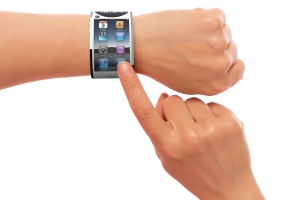Grim sales forecasts for smartwatch sales have been reaffirmed by new research commissioned by The BIO Agency, which found just 6% of British adults intend to buy one in the next 12 months.
This comes as a number of technology companies have announced new wearable products at the Consumer Electronics Show in Las Vegas last week. Last year Jeff Williams, senior vice president at Apple, also admitted that ‘millennials don’t wear watches’ and that in launching the Apple Watch the company was ‘entering a market where other products aren’t doing that well’.
The online research, carried out by YouGov, asked 2,076 British consumers their opinions on so-called ‘connected products’ – devices which contain sensors, software and connectivity that allows data to be gathered and shared with other devices and users.
Men were almost twice as likely as women to intend to purchase a smartwatch, with 4% of women intending to buy one in 2016 compared to 7% of men. Just 2% of participants aged 55 and over were intending to buy smartwatches.
The data also showed that millennials (those aged 25-34 years old) were more likely to intend to purchase a smartwatches in the next 12 months than any other age group – with the figure rising to 11%.
Where other connected products are concerned, 35-44-year-olds were the most likely to intend to buy a fitness tracker such as a Fitbit or a Jawbone, with 13% of respondents indicating their intention to purchase one in the coming year (versus the 7% average).
The least popular product of those listed was a ‘smart’ kitchen device – such as a fridge connected to a shopping app – with just 3% intending to buy this.
When asked what definition from a given list they felt best defined a connected product, survey respondents favoured the description “a digital product that is ‘smart’ and knows who I am or what I want” (24%) and “a product or app that recognises me and my needs or lifestyle, and provides me with content or services relevant to my needs” (22%).
Peter Veash, CEO of The BIO Agency said: “In order for a connected product to be successful, it needs to enhance the customer’s digital experience and be genuinely useful in everyday life – the problem with smartwatches is that they don’t bring anything new to the table, and are merely an add-on to the ever-growing list of devices consumers use each day.
“What 94% of our respondents are telling us is that they don’t intend to buy this kind of device – it’s up to the big tech companies to create something that changes their mind. In the meantime, in order to make such connected products useful for consumers, brands and retailers should focus on things like creating useful apps for smartphones, which most people already own.”
Comment on this article below or via Twitter: @IoTNow_ OR @jcIoTnow










